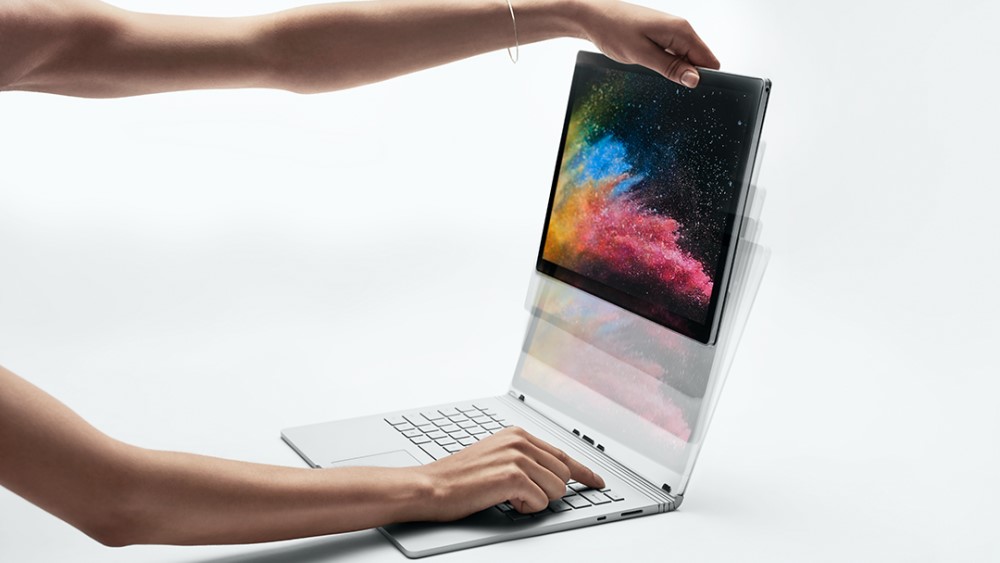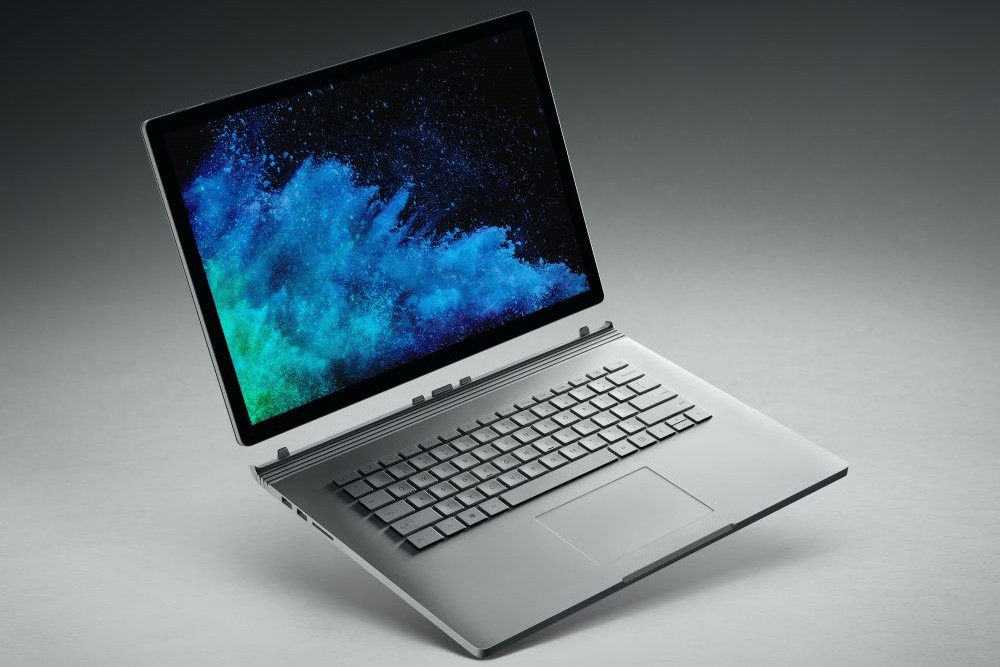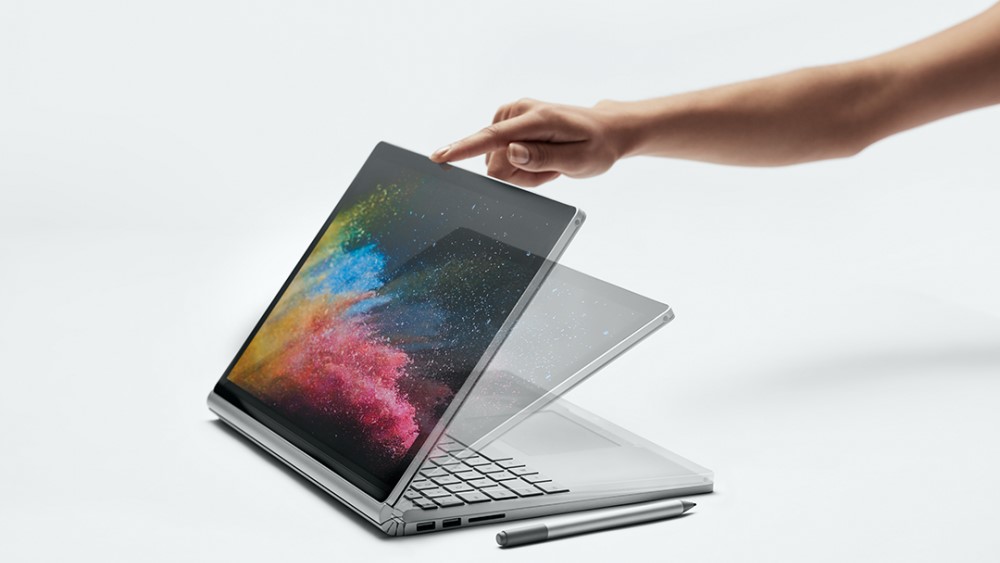Microsoft’s Surface Book 2 display: one of the most finely-tuned screens ever made
Behind the Design: Microsoft's Stevie Bathiche takes us beneath the screen

In revealing the Surface Book 2 to a group of journalists in mid-October in New York City, Microsoft devices lead Panos Panay focused much of the unveiling on the superiority of its new 2-in-1 laptop’s touch display.
Admittedly, and not to discredit Panay’s passion or dedication, but we heard many of these words in the same way we hear Apple CEO Tim Cook say that whatever iPhone he’s currently pushing is the best iPhone yet. Of course, it is. Of course, Microsoft has crafted the best Surface Book display to date.
But, when you speak with someone like Stevie Bathiche, a Technical Fellow at Microsoft working on its hardware design, you begin to understand just how much engineering work and ingenuity goes into making such a claim. In fact, Microsoft designs its displays right down to the pixels – well, almost.
“When we design the display we, for example, specify that we need negative-mode LCD, we specify the exact number of pixels, which is unique,” Bathiche tells us. “No-one creates those number of pixels this way and also the exact size and format. And, if you look at the numbers, we actually find for sweet-spot numbers that are mathematically nice. So, this is a 15-inch display, 3 by 2 [aspect ratio]. If you divide out the numbers, that means it’s actually 12.5 inches wide and it’s exactly 12.50, which is kind of nice, so the numbers round out to be quite beautiful.”
With this level of attention to detail, and penchant for mathematical beauty, it makes you wonder what specifically goes into this process. After all, it’s not as if Microsoft is manufacturing displays in-house. But, for what goes into said process, it’s about the only step Microsoft doesn’t take.
"This is why … we don’t source our displays: we actually design the electronics that drive the display itself."
Microsoft's Stevie Bathiche
“All of our displays are custom to our spec,” Bathiche says. “A lot of engineering on the Microsoft side goes into the display, the mechanical integration, the backlight design, pixel layout, formats, even what liquid crystals are used, even sometimes we’ll go into transistor structures if we need to change that.”
In short, Microsoft essentially designs the display soup to nuts. So, where does the manufacturing partner come into play?
Get daily insight, inspiration and deals in your inbox
Sign up for breaking news, reviews, opinion, top tech deals, and more.
“[For] the most part, of course our partners are also experts in this area. But, the thing we’ve found is that there [are] so many variables when you’re making a display that you need to tune to make those trade-offs in performance and power consumption, and cost and yield, that a partner can’t do that on their own and make the right trade-offs for Surface,” Bathiche admits.
“And, so typically what we do is we form a team that lives and breathes with our partner, and we work very close with that partner, and it becomes essentially a created display. Now, sometimes they [ask], ‘Can we use this display for other people?’ and, sometimes, we’ll say no. That’s an example of how this is our own display: because they can’t necessarily turn around and sell that display to someone else.”
Essentially, right up to when it hits the assembly line, Microsoft’s teams of technical fellows and engineers have their hands in the process up to their elbows. We’re told that this level of dedication, not to mention input from Microsoft’s legal department, leads to these designs becoming the company’s intellectual property (IP).

Microsoft makes chips, too, you know
In fact, the team up in Redmond, Washington developed IP for its very own processor in designing the displays for its Surface line of products. It’s what is known as a TCON chip, or timing controller.
No, Microsoft isn’t about to compete with Intel anytime soon. Consider this piece of silicon a coprocessor that controls a very specific function of Microsoft’s displays: the behavior of the pixels as they’re interacted with.
“This TCON chip drives the display itself. So this is why … we don’t source our displays: we actually design the electronics that drive the display itself,” Bathiche reveals. “This TCON chip obviously drives the pixels, but it also does two other things. It has a 3D color lookup table, so that it allows us to do those enhanced color loads – the fast profile colour-switching, which no other PC does that – and it also accelerates the ink.”
This last piece is perhaps the most intriguing trait of Microsoft’s TCON processor, as Bathiche demonstrated for us during our conversation at the event. All it took was for Bathiche to scribble on a Sticky Note and run the Surface Pen off of the note window, making gray traces of ink appear on the desktop wallpaper behind it that almost immediately disappeared.
"Think of us as a fabless maker – that just designs the silicon."
Microsoft's Stevie Bathiche
That’s the TCON rendering the ink before even Windows 10 does. But, there’s another piece to this puzzle, and that’s the ASIC, or Application-Specific Integrated Circuit, that Microsoft also designed specifically for its displays.
“We took our ASIC that we designed for the touch and display, which was our own ASIC as well, and we connected it directly to the TCON directly. And so, our touch ASIC actually has a signal that splits [and one] goes to the operating system and one goes directly to the display,” Bathiche explains. “So, when the pen comes down, the pen signal is sent directly to the display, and we actually render ink ahead of the operating system. That’s why we’re able to claim the fastest pen in the world at 22 milliseconds, because as soon as our ASIC gets it on the touch and display controller, it renders it directly on the display, like the actual display chip.”
But, if digital ink on Surface products is rendered before the OS even recognizes it – 50 milliseconds worth of inking data before erasing as the OS catches up, we’re told – what about custom fonts and colors that could only be triggered through the OS? Naturally, Microsoft has thought of this.
“We did another special thing in that, in order for us to know what color and font size to write, because the touch controller doesn’t know that and neither does the display controller without the operating system and the application telling you, [we created] an API [Application Programming Interface] in direct ink, that actually talks directly to our timing controller and says I want this sized font, this color and re-rendering.”
If you’ve ever wondered how Microsoft stands so strongly behind such a lofty claim that drawing or writing on a Surface product with a Surface Pen feels like doing so on paper, it’s because the firm designed not one, but two pieces of silicon to get to that point. And, this is just the beginning.

Microsoft: the next fabless maker
During our conversation, Bathiche detailed even more pieces of its displays that are designed in-house, like the LCD module that determines screen thinness (less than 10mm, in the Surface Book 2’s case) and the self-adaptive refresh rate that debuted on the Surface Pro 4, changing the screen’s refresh rate depending on when and how it’s being used.
After chatting with Bathiche about just one end of Microsoft’s design and development work that goes into the final product, in this case the Surface Book 2, the company’s level of investment in creating its own hardware is clear: it’s massive.
In conceiving and refining the Surface line since before 2012, Microsoft has come to the same realization that Google did more recently and that Apple did decades before the both of them: if you want something done right, you have to do it yourself. Well, that and find friends you can trust.
“Think of us as a fabless maker – that just designs the silicon. And, just like any fabless maker, when you send the chip off, the maker actually is able to help [put] IP into that as well. It’s a shared thing, just like when you make a [proper] silicon,” Bathiche says. “You have the buyer putting in IP [and] then you have the maker also putting in IP. There’s things you don’t need to redo – that’s kind of silly. And, that’s the thing: the harder the display is, the more we have to essentially be involved. But, we definitely do not say, ‘I want a display that does this, please make it for us,’ and then the display magically comes up. It doesn’t work – you just wouldn’t get this product.”
- These are the best 2-in-1 laptops around, joined by the Surface Book 2
Joe Osborne is the Senior Technology Editor at Insider Inc. His role is to leads the technology coverage team for the Business Insider Shopping team, facilitating expert reviews, comprehensive buying guides, snap deals news and more. Previously, Joe was TechRadar's US computing editor, leading reviews of everything from gaming PCs to internal components and accessories. In his spare time, Joe is a renowned Dungeons and Dragons dungeon master – and arguably the nicest man in tech.
